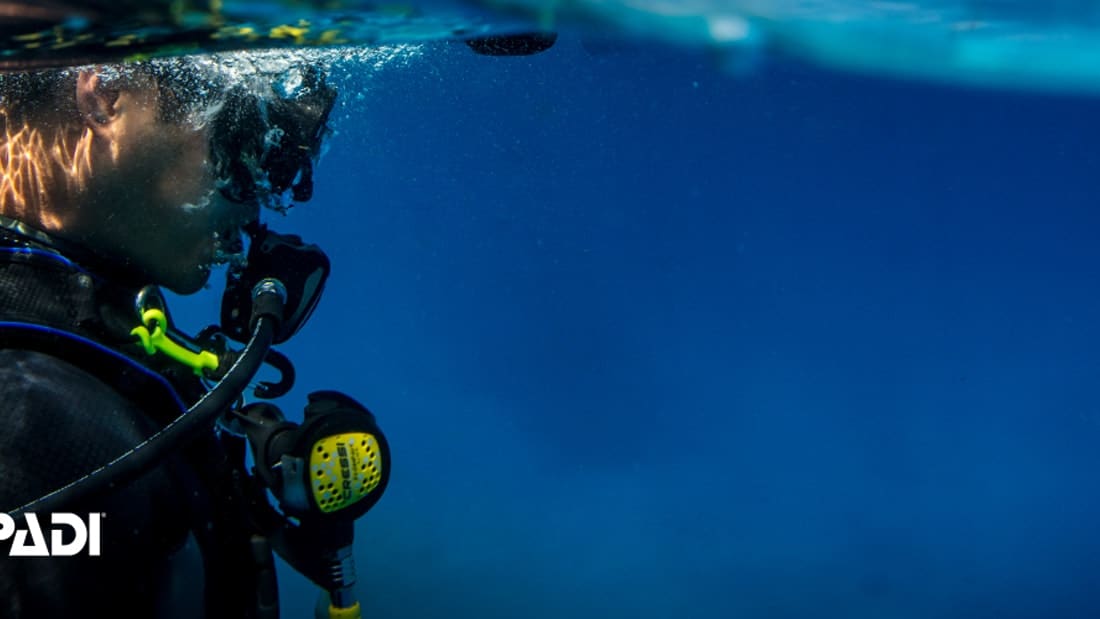Why You Shouldn’t Combine the Open Water Diver and Advanced Open Water Diver Courses Back-to-Back
Open Water Diver (AOWD) – in one short period might seem appealing in terms of saving time or money. However, most experienced instructors and dive centers strongly advise against this approach. Let’s understand why.
Goals of the OWD and AOWD Courses:
* Goal of the OWD (Open Water Diver) Course: This is your first step into the world of diving. The main objective is to teach you the fundamentals of safe scuba diving. You master essential skills: how to use equipment, control buoyancy, breathe underwater, handle routine and emergency situations, and plan simple dives. The OWD course provides you with a basic license to dive with a buddy to a depth of up to 18 meters (60 feet) in conditions similar to those where you trained. This is the foundation of your knowledge and skills.
* Goal of the AOWD (Advanced Open Water Diver) Course: This course is designed to expand your diving experience and increase your confidence underwater, after you have mastered and solidified the basic OWD skills. It introduces you to various types of diving (e.g., deep, night, underwater navigation, wreck diving) under the supervision of an instructor. The goal is not so much to learn a lot of new theory, but rather to try new things, improve existing skills (especially buoyancy and navigation), and become a more independent diver, certified for dives up to 30 meters (100 feet) (upon completion of the deep adventure dive).
Physical and Mental Fatigue:
The OWD course itself is quite intensive. It includes theory sessions, confined water training (pool or shallow water), and open water dives. This requires concentration, physical effort, and adaptation to a new environment. For a beginner, this is a significant load. Immediately adding the AOWD program, which includes another 6 dives with new tasks, can lead to severe physical and mental exhaustion. Fatigue reduces concentration, increases the risk of mistakes, and can simply take the enjoyment out of diving.
Insufficient Skill Acquisition and Consolidation:
Skills learned during the OWD course require time and practice to become ingrained. Buoyancy control, proper finning techniques, emergency procedures – all these need to become “second nature.” If you move directly to AOWD immediately after OWD, you simply won’t have time to practice and internalize the basic skills in real conditions without the stress of training. The AOWD course assumes you are already comfortable underwater with the basics and builds upon that foundation. Without a break, this foundation might still be too shaky, leading to superficial learning of the material from both courses. You’ll get the certification cards, but not real, confident skills.
Uncertainty at the Start of Training:
When starting the OWD course, a student, especially one without prior experience, cannot be 100% certain they will master all the necessary skills within the standard timeframe (e.g., the mentioned 5 days). Some people need more time to adapt to the water, work on buoyancy, or overcome psychological barriers. By signing up and paying for the AOWD course in advance, you put yourself in a situation where you need to “rush” through OWD, even if you don’t feel fully ready. This creates unnecessary pressure. Furthermore, even after successfully passing the OWD exams, a student might not be mentally or physically prepared to immediately continue training at the next level.
Loss of Valuable Experience Between Courses:
The ideal path for a diver after OWD is to undertake several “fun dives” with a buddy or dive guide. It’s during these dives that you truly start applying and honing your OWD skills in a relaxed environment, gain experience, and figure out what aspects of diving interest you most. This experience is invaluable before starting AOWD. By taking the courses back-to-back, you deprive yourself of this crucial stage in a diver’s natural development.
Conclusion:
Although combining the OWD and AOWD courses is technically possible with some organizations, it is not recommended for most students. The best approach is to complete the OWD course, then take a break, go diving for fun, gain experience and confidence, and only then, consciously approaching the next step, enroll in the AOWD course. This approach ensures higher quality learning, better skill retention, greater safety, and, importantly, more enjoyment from the diving process itself. Remember, diving is not a race for certifications, but a fascinating and safe exploration of the underwater world.


